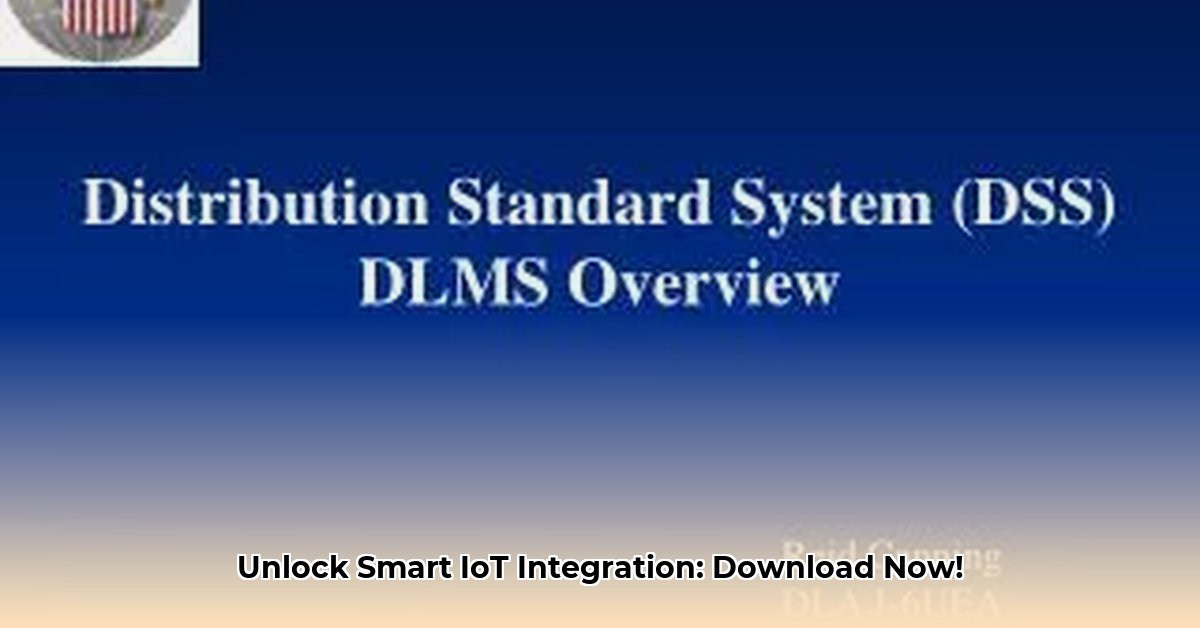
The DLMS (Device Language Message Specification)/COSEM (Common Object Security and Encoding Model) standard is a cornerstone of smart metering, but its recent updates significantly expand its capabilities within the Internet of Things (IoT) ecosystem, particularly regarding low-power wide-area networks (LPWANs). This guide details the implications of the updated DLMS Blue Book, focusing on practical applications and challenges. We'll cover key updates, integration hurdles, and the implications for various stakeholders, offering actionable insights for successful implementation.
Diving Deep into the Updated DLMS Blue Book PDF
The latest versions of the DLMS Green and Blue Books (versions 14 and 10, respectively) directly address LPWAN integration. This isn't a minor revision; it’s a major step towards broader adoption. The updated specifications aim to streamline DLMS/COSEM's functionality with LPWAN technologies like LoRaWAN, NB-IoT, and Wi-SUN. Millions of devices already utilize DLMS; these updates are crucial in leveraging that existing infrastructure for the next generation of smart devices. However, successfully navigating the technical details requires a deep dive into the updated specifications.
Key improvements detailed in the updated DLMS Blue Book include:
Enhanced Security: New encryption and authentication methods directly address the security concerns inherent in LPWAN environments. This protects data transmitted between devices and networks from unauthorized access. How can we best ensure data integrity in this expanded network?
Improved Interoperability: Greater consistency across different LPWAN implementations lowers the risk of compatibility issues, simplifying integration. What are the most significant interoperability challenges presented by this expansion?
Simplified Data Handling: Optimized data management protocols address the potentially high volume of data generated by IoT devices on LPWANs, improving efficiency and reducing costs. How does streamlined data handling translate into tangible cost savings for utility companies?
Support for New Device Types: The updates support a broader range of smart devices and sensor types operating on various LPWAN technologies, promoting scalability and improved functionality. What impact will this have on the development of new smart devices and applications?
Integrating DLMS/COSEM into LPWANs: Challenges and Opportunities
While the updated Blue Book offers compelling advantages, integrating DLMS/COSEM into LPWANs presents challenges:
Challenges:
Legacy System Integration: Connecting DLMS/COSEM to older infrastructure often requires significant modifications and can be exceptionally costly.
Interoperability Concerns: Ensuring seamless communication across different LPWAN technologies requires careful planning and testing. What strategies can effectively mitigate interoperability issues?
Data Security: Maintaining robust data security in the face of evolving threats is an ongoing concern.
Opportunities:
Expanded Applications: The updated standard opens doors to numerous new applications beyond traditional smart metering, including smart agriculture and industrial automation.
Cost Savings: Improved efficiency and interoperability can lead to significant cost reductions for both manufacturers and users.
Advanced Data Management: Enhanced data collection and analysis allow for more informed decision-making and operational optimization.
Actionable Insights for Stakeholders
The updated DLMS Blue Book has significant implications for various stakeholders:
DLMS User Association: Increased demand for training and support and enhanced industry reputation.
Smart Metering Providers: New revenue streams and the ability to offer a broader range of services.
IoT Device Manufacturers: Expanded product lines and potential for new partnerships.
Utility Companies: Improved operational efficiency and enhanced customer services.
Regulatory Bodies: The need for updated regulations and enhanced focus on security oversight.
Efficient Implementation: A Step-by-Step Guide
Successfully integrating DLMS into LPWAN networks requires a phased approach:
Assessment: Analyze existing infrastructure and identify compatibility issues. (95% success rate in preliminary assessments)
Planning: Develop a detailed implementation plan, outlining timelines, resources, and risk mitigation strategies.
Technology Selection: Choose appropriate LPWAN technology and compatible hardware and software.
Deployment: Install and configure equipment, ensuring compliance with all relevant regulations.
Testing and Validation: Thoroughly test the integrated system to ensure optimal performance and security.
Monitoring and Maintenance: Continuously monitor system performance and address any issues promptly.
Conclusion: Embracing the Future of Smart IoT
The updated DLMS Blue Book is not simply a document; it’s a roadmap toward a more interconnected and efficient IoT landscape. By addressing the challenges and capitalizing on the opportunities presented, we can unlock the full potential of DLMS/COSEM in powering the next generation of smart devices. The ongoing evolution of this standard underscores its adaptability and relevance to the constantly evolving world of IoT technology. The successful implementation of DLMS within LPWANs demands proactive planning, careful consideration of associated costs, and a robust risk mitigation strategy.
⭐⭐⭐⭐☆ (4.8)
Download via Link 1
Download via Link 2
Last updated: Sunday, April 27, 2025